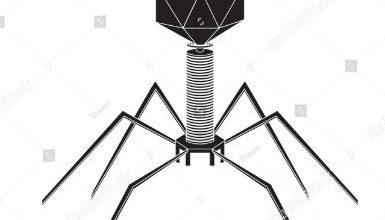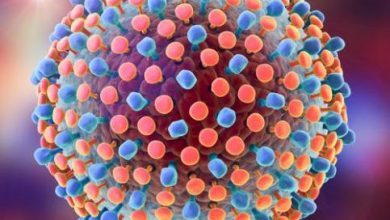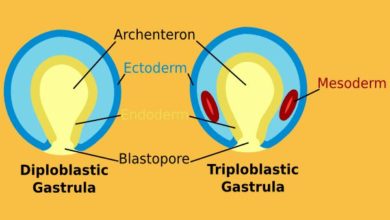Class Filicineae (ferns) Characteristics and Examples with Explanation
Adiantum: (Maiden-hair-fern/Filicineae)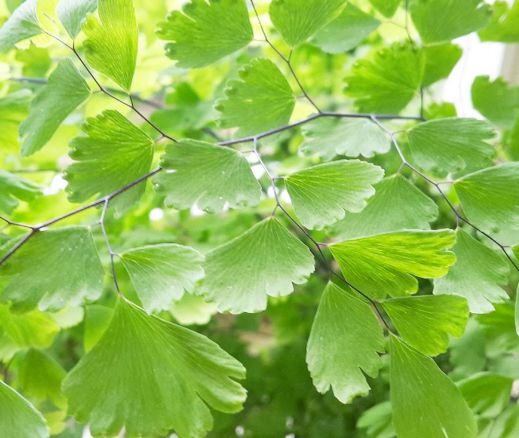
1. Habitat
Adiantum is a fern. It grows along the moist wall, watercourses and drains (sewerage).
2. Vegetative Structure
The plant body is the sporophyte. It is a small herb. It consists of a stem, roots, and leaves.
- Stem: It has a short, thick, and underground stem called a rhizome. It is protected by brownish scales (ramenta). It is covered by a persistent leaf basis.
- Roots: It has fibrous adventitious roots. These roots arise directly from the lower side of the rhizome.
- Leaves: It has pinnately compound leaves or fronds. These leaves arise from the upper side of the rhizome. Young leaves (fiddleheads) show circinate vernation. The stipe (stalk) and rachis of the leaf are black, smooth, and shiny. Hence it is called maidenhair fern.
The rachis has many leaflets (pinnae and pinnules). Pinnae arise directly from the rachis. Each pinna has many pinnules. Pinnules are leaflets of second order. Pinnae and pinnules show dichotomous venation. The sporangia are present in groups called Son. These sori are borne on the underside of the reflexed lobes of the margins of leaflets. These bent margins of leaflets protect the son. So it forms false indusium.
3. Life Cycle
The life cycle of Adiantum shows heteromorphic alternation of generation. The sporophyte is dominant and the gametophyte is small and reduced but separate and independent.
Sporophyte
The sporophyte produces a large number of sori (singular sorus). The sori are green but become dark brown when ripe. Each sorus has a number of sporangia covered by a false indusium. The leave bearing sporangia are called sporophylls.
Each sporangium is slightly flattened. It has a biconvex body called a capsule. This capsule is borne on a multicellular stalk. The wall of the capsule consists of a single layer of flat, thin-walled cells. The edge of the capsule is made up of two parts, the annulus, and the stomium. The annulus form three fourth of the edge. The remaining fourth part is the stomium. The radial and inner walls of the annulus are thick. The stromal cells are thin-walled.
Spore mother cells divide by meiosis within the sporangium and form haploid spores. The annulus of the sporangium contracts in dry weather. As the stromal cells are thin-walled, so they rupture and spores are dispersed by wind. When a spore falls on moist soil, it germinates at a suitable temperature. It produces a haploid gametophyte or prothallus.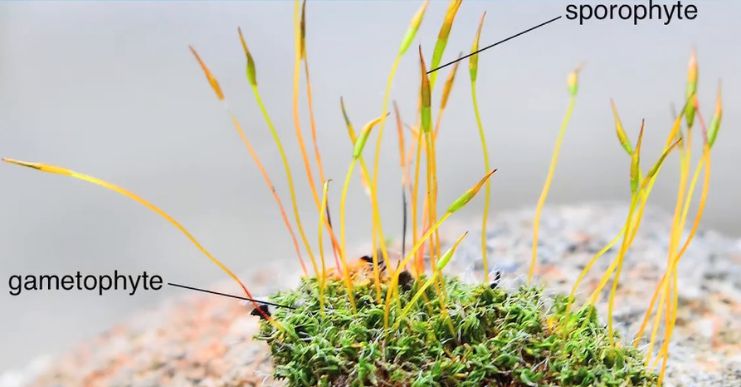
Gametophyte or Prothallus
Prothallus is a small, flat, and heart-shaped structure. It is autotrophic. A notch is present at the anterior end of the prothallus. In this notch lies the growing point. The size of the prothallus is one-third of an inch at its longest díameter. It is horizontally placed on the soil.
It has unicellular rhizoids on its lower surface towards the posterior end. The rhizoids fix the prothallus on the soil. It absorbs nutrients for the prothallus. Prothallus is composed of rounded thin-walled cells. The margin of prothallus is one-celled thick. Its middle part is many-celled thick and it is cushion-like.
The prothallus is monoecious i.e. male and female sex organs are present on the same plant. These sex organs are present under the surface of the prothallus. In mature prothallus, archegonia are present near the notch and antheridia are scattered among the rhizoids.
The archegonium consists of a venter and a neck. The venter contains an egg or oosphere. It is embedded in the cushion of the thallus. Antherozoids reach the archegonium by swimming in water. Fertilization occurs and oospore is formed. The oospore grows to form sporophyte. The young sporophyte is first attached to the gametophyte but later becomes independent.
Characteristics of Class Filicineae
- The Filicineae or ferns are mostly shade and moisture-loving plants. A very few plants of this group grow under dry conditions. They grow on the hills and plains. Some are epiphytic and grow on the bark of trees. Although ferns are worldwide in the distribution they are especially abundant in the tropics (cold areas).
- The plant body consists of roots, stem, and leaves. It is sporophytic in nature.
- The class Filicineae contains foliar sporangia (their sporangia are attached to frond or leaves).
- Their leaves are called fronds. The fronds are coiled when they are immature and young. This pattern of development is called circinate vernation. It is an important character in this group.
- Each leaf consists of two parts, petiole and blade. The petiole is covered with hairs, called ramenta.
- The blade is either simple or pinnately compound i.e. divided into many small leaflets, called pinnae and pinnules.
- They vary greatly in size.
- The stem is an underground rhizome, but in some ferns, it is aerial and erect.
- Examples: Dryopteris, Pteridium, Adiantum, and Pteris, etc.
